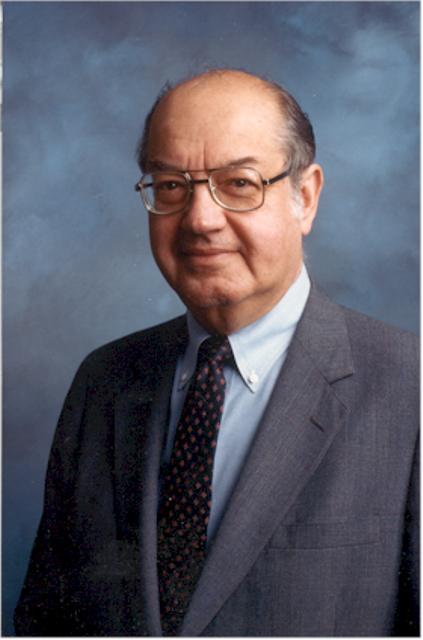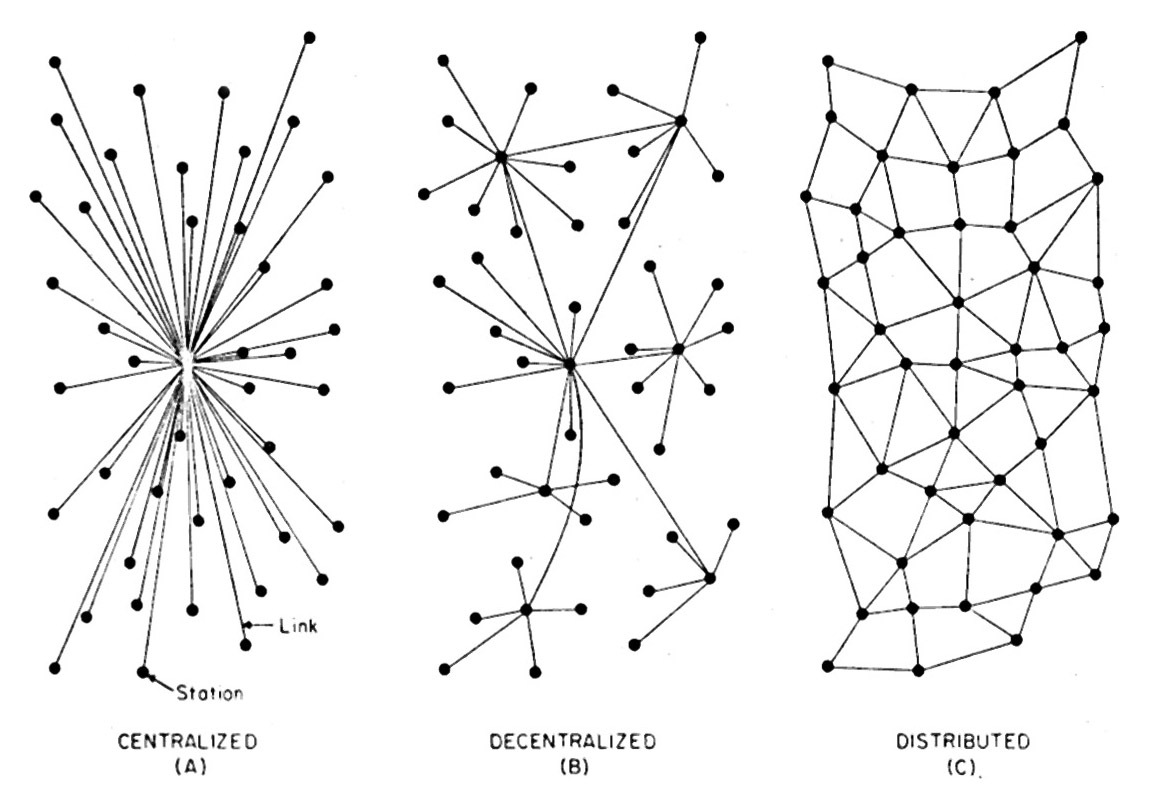Paul Beren is one of the inventors of the packet-switched network.
“Our world is the best place for technology invented and developed by Paul Beren”
James Thomson, President RAND
April 29, 1926 in the city of Grodno (Poland) was born Paul Beren - an engineer, scientist and inventor, one of the founders of the packet data technology.

Paul was the youngest of three children in a Polish-Jewish family. His family moved to the USA on May 11, 1928: first to Boston, and then to Philadelphia, where his father opened a grocery store. He graduated from Drexel University (Drexel University) in 1949 with a degree in engineering. Then he worked at the Eckert-Mauchly Computer Company, where he worked on the technical work of UNIVAC models (the first commercial computer brand in the USA). In 1955, he moved to Los Angeles and worked at Hughes Aircraft with radar systems. Received a master’s degree in technical sciences from the University of California. At first, Baren stayed in Los Angeles to continue his doctoral dissertation, but due to work schedules and heavy journeys, he refused to doctoral work.
Packet Switching Network Design
In 1959, Beren, working for the RAND Corporation, took on the task of developing an “invulnerable” communication system that could support communication between endpoints in the face of damage from nuclear weapons. During the Cold War, most US military communications used high-frequency communications that can be disabled for many hours with nuclear weapons. Beren decided to automate the previous work of the RAND director: emergency communication as compared to conventional radio networks and showed that the distributed architecture of the relay node may be invulnerable.
')
Using the technology of mini-computers of the time, Beren and his team developed a simulation package to test connectivity to an array of nodes with different degrees of connection. That is, a network of n-level degrees of connectivity will have n connections on the node. Simulation in a random order "killed" nodes and subsequently tested the percentage of nodes remaining connected. The simulation result showed that networks with n ≥ 3 had a significant increase in stability. Beren's insight derived from the simulation was that the excess is the key.
Baren and his team, after proving invulnerability, had to show proof of the concept for this plan so that it could be built. This included a high level of detail in the exploitation plan, the design and cost of all the components needed to build a network that would achieve the goal of this new understanding of redundant links. The result was one of the first switching protocols with intermediate storage in the data layer, a channel state routing protocol, and an unproved connection-oriented transport protocol.
Beren began research into the development of an invulnerable communications network, the result of which was first presented in the summer of 1961, as a briefing B-265, then a report R-2626, and then a series of eleven complex works called "On Distributed Communications" in 1964 (link to this work at the end of the article).
According to Beren, unlike telephone equipment companies, its design does not require expensive “gold-plated” components to be reliable.
"Milestones of costs that can be indicated for the evaluation of the system will occur at about $ 1.25 million (during the Study and Research phase), then $ 5 million (at the end of the Research and Research phase), at $ 11.6 million (at the end of the Design phase), at around $ 15.7 million (at the end of the Testing phase), at $ 21.7 million (at the end of the Development phase) and at $ 23.7 million (at the end of the Final Test phase). Thus, there are many early opportunities to reevaluate and redirect this program when discovering unforeseen difficulties or better alternative approaches. ”
Paul Beren, "On Distributed Communications", 1964
Beren's study describes a perfectly detailed architecture of a distributed, invulnerable, packet-switched network. The network is designed to withstand virtually any degree of destruction of individual components without loss of connectivity. Since each computer could be connected to one or more computers, Beren suggested that any link in the network could fail at any time and therefore the network should not have centralized control or administration.

Baran Network Diagram
The basis for this scheme was the division of information into "blocks" before sending them over the network. This would enable faster data flow and more efficient use of communication lines. Each unit was sent separately, moving in different ways and connecting into a whole, when it reached at its destination.
Parallel development
Donald Davis also thought about such an idea and implemented a trial network. While Beren used the term “message blocks” for his units of communication, Davis used the term “packages,” as this made it possible to translate into other languages without compromising. He applied the concept to a general-purpose computer network.
Davis's key insight came in the realization that the computer’s network traffic was, in fact, “intermittent” with periods of silence compared to relatively constant telephone traffic. In fact, Davis's packet switching work (and not Beren) first attracted the attention of ARPANET developers at a conference in Gatlinburg, Tennessee, in October 1967. Beren was glad to know that Davis had come to the same idea. In an email to Davis, he wrote
“You and I share a common view that packet switching is important because you and I, independently, have come to the same components.”
Leonard Kleinrock, a contemporary of data flow analysis, also came to similar conclusions when he developed the theoretical basis for the functioning of packet networks in his doctoral work plan in 1961. He published his ideas that year. However, Kleinrock’s contribution to packet switching has been disputed by some, including Beren and Davis.
Beren Organizations
In 1968, Beren became the founder of the Institute for the Future, and then participated in other networking technologies developed in Silicon Valley.
Took part in reviewing the NBS data encryption proposal in 1976, along with Martin Hellman and Whitfield Diffie from Stanford University.
In the early 1980s, Beren founded PacketCable, Inc. " to support pulse-pay TV channels, locally generated video text and voice packaged." PacketCable separated from StrataCom to commercialize its voice technology package for the telephony market. This technology led to the first commercial pre-standard Asynchronous Transfer Mode (asynchronous data transfer method).
Baren founded Telebit after the birth of discrete multi-frequency modem technology in the mid-1980s. It was one of the first commercial products that used orthogonal frequency division multiplexing, which was subsequently widely used in DSL modems and Wi-Fi modems.
In 1985, Beren founded Metricom , the first wireless Internet company.
In 1992, he also founded Com21 , an early cable modem company.
After Com21, Beren founded and was president of GoBackTV , which specialized in personal TV and IPTV cable infrastructure equipment for television operators.
Founded Plaster Networks , which provides advanced solutions for connecting network devices through existing wiring in a home or small office.
Baren expanded his work of packet switching to the theory of the wireless spectrum, developing what he called the "kindergarten rules" for using the wireless spectrum.
According to Paul Saffo, Beren also believed that innovation was a “command process” and he did not seek recognition for himself.
Hearing the news of Beren’s death, Robert Kahn, co-author of the Internet, said:
"Paul was one of the best gentlemen I've ever met, and creative to the very end."
Interesting links:
→ Interview with Paul Beren
→ "On Distributed Communications"
Source: https://habr.com/ru/post/404167/
All Articles